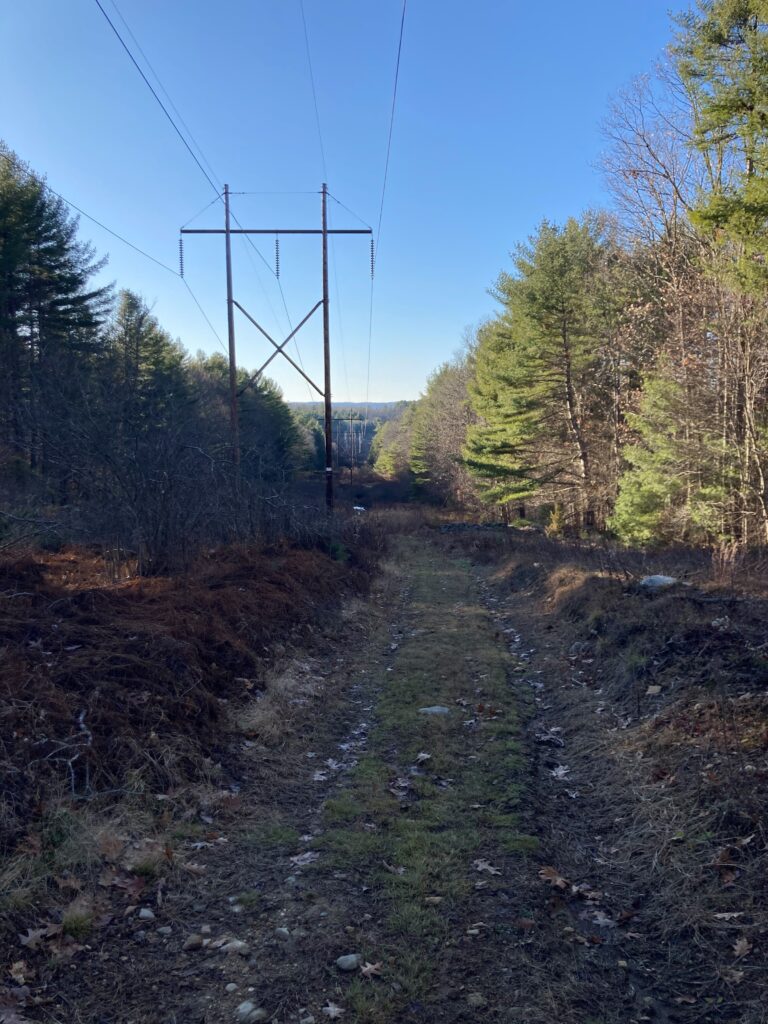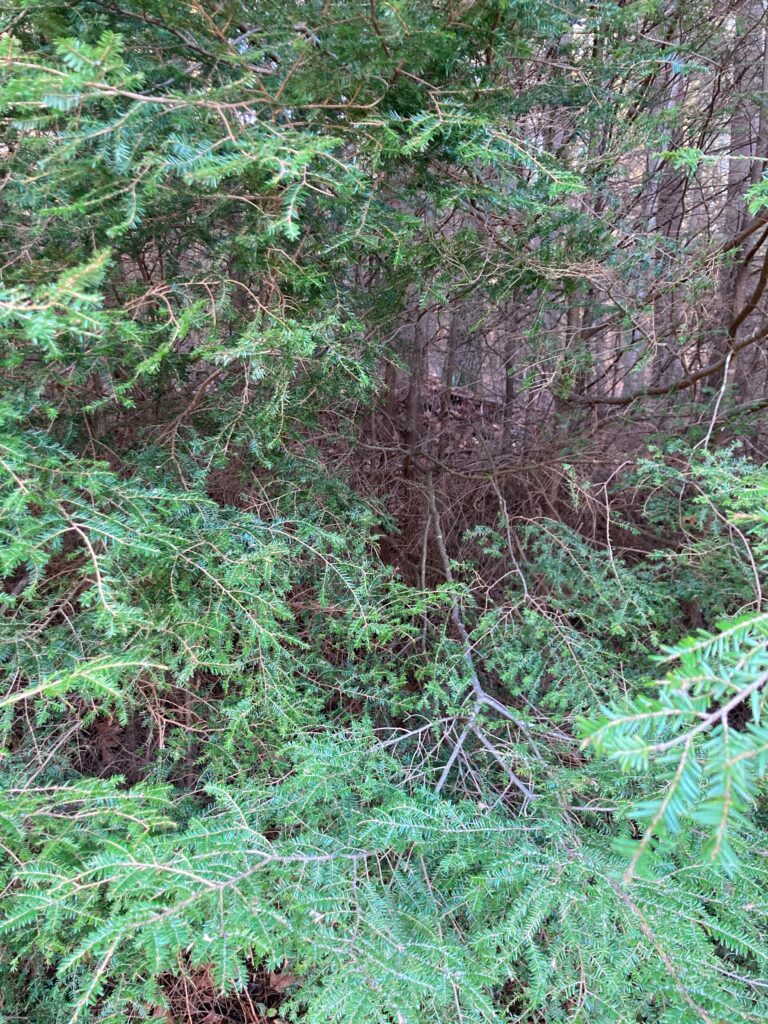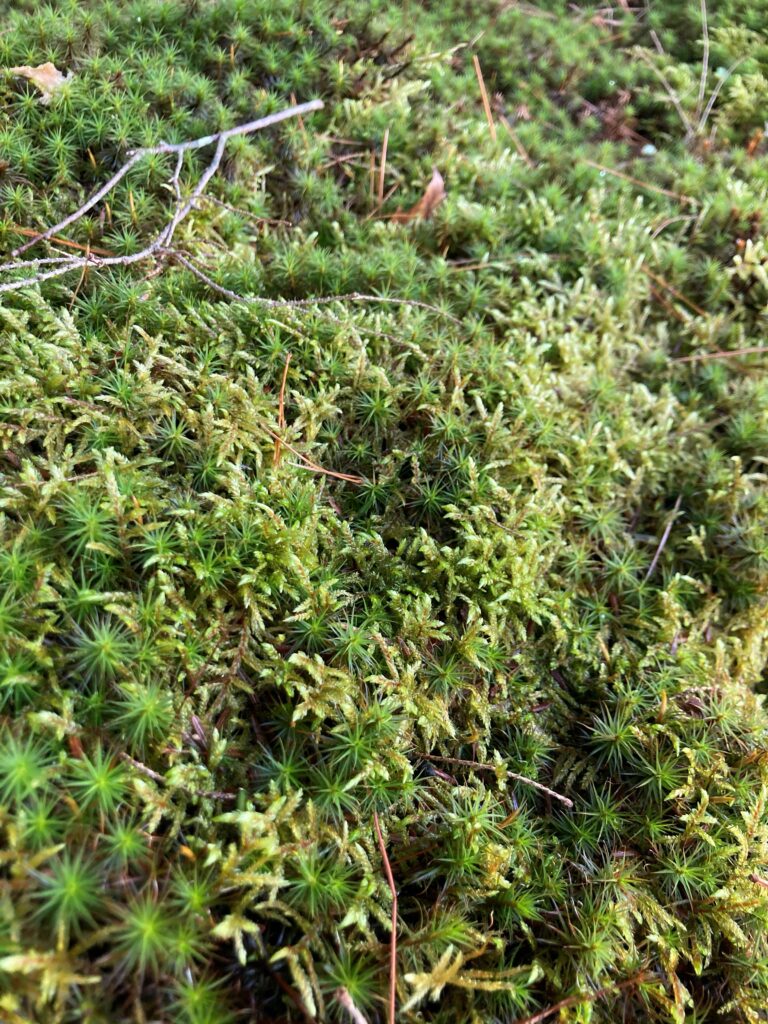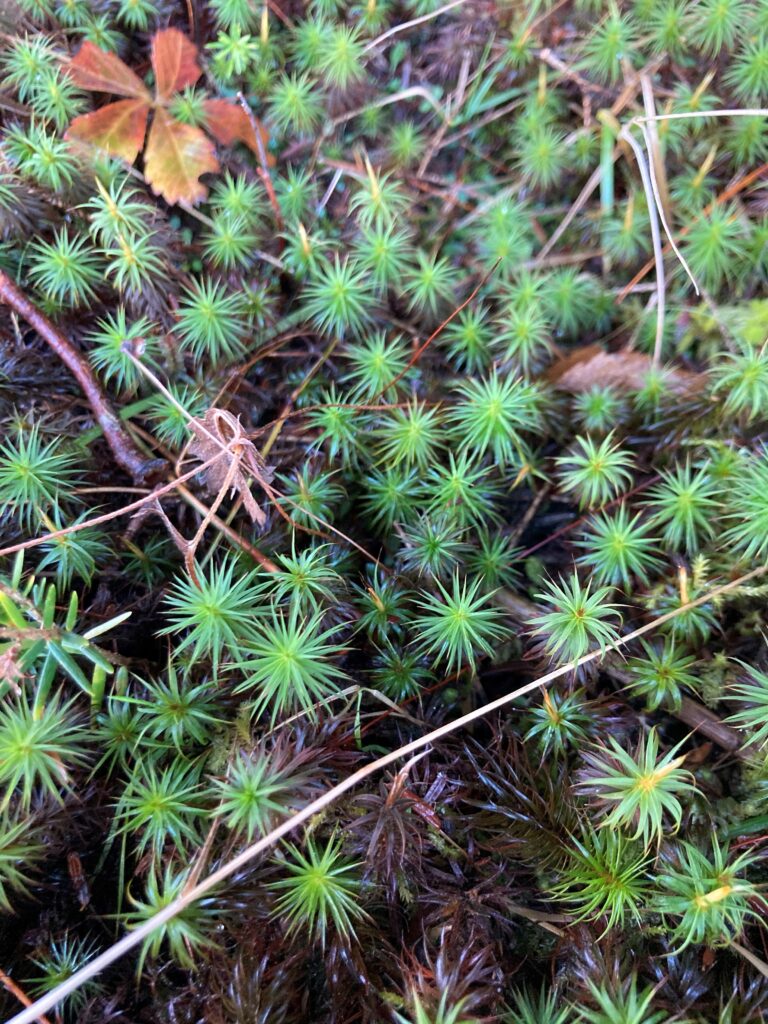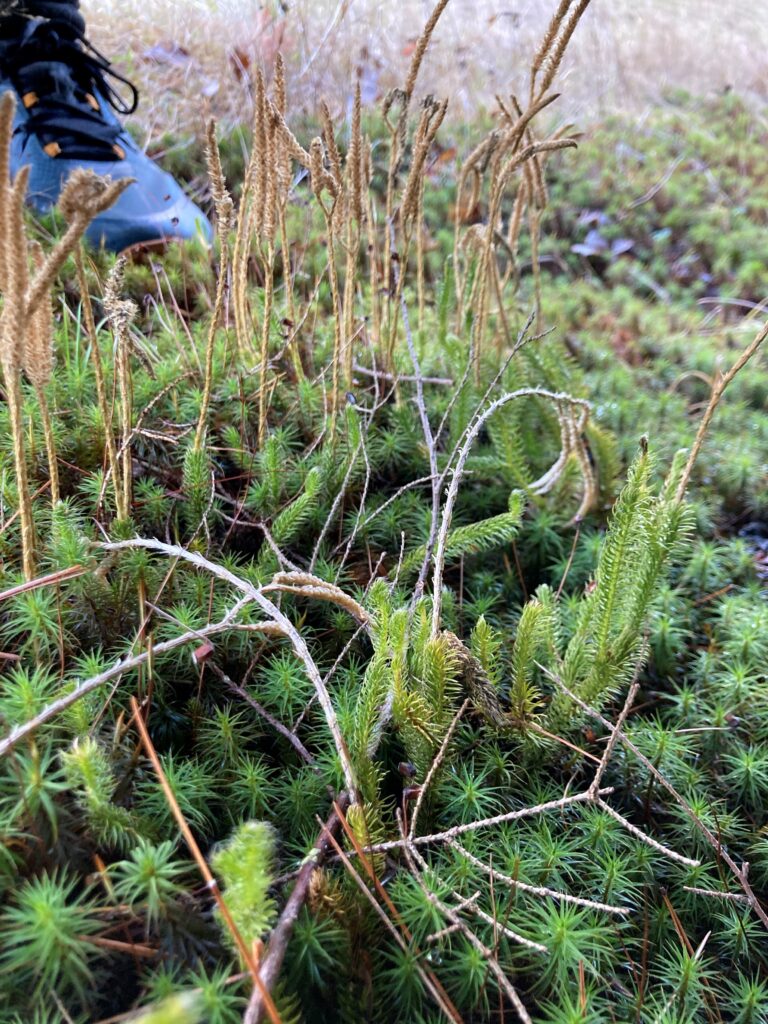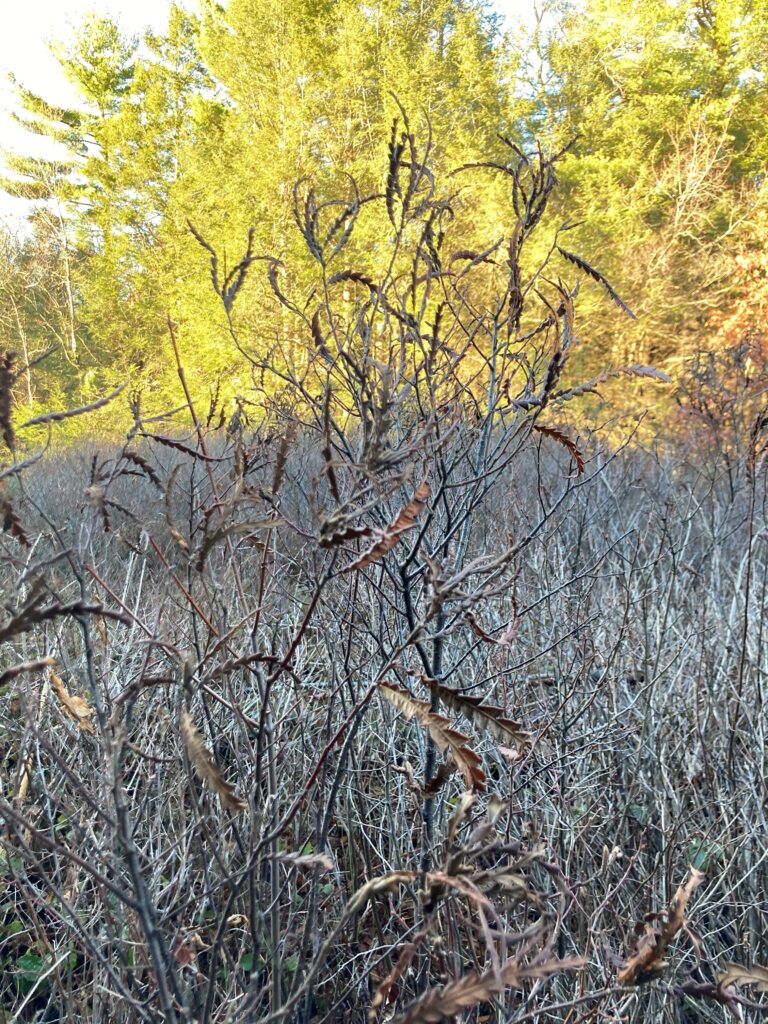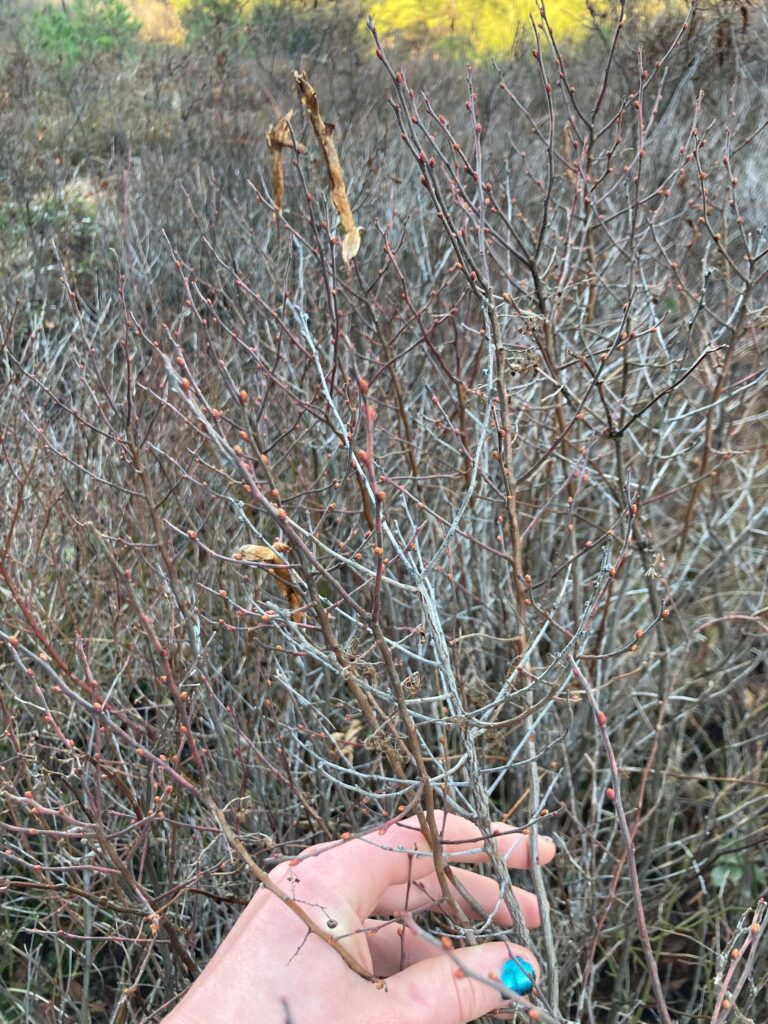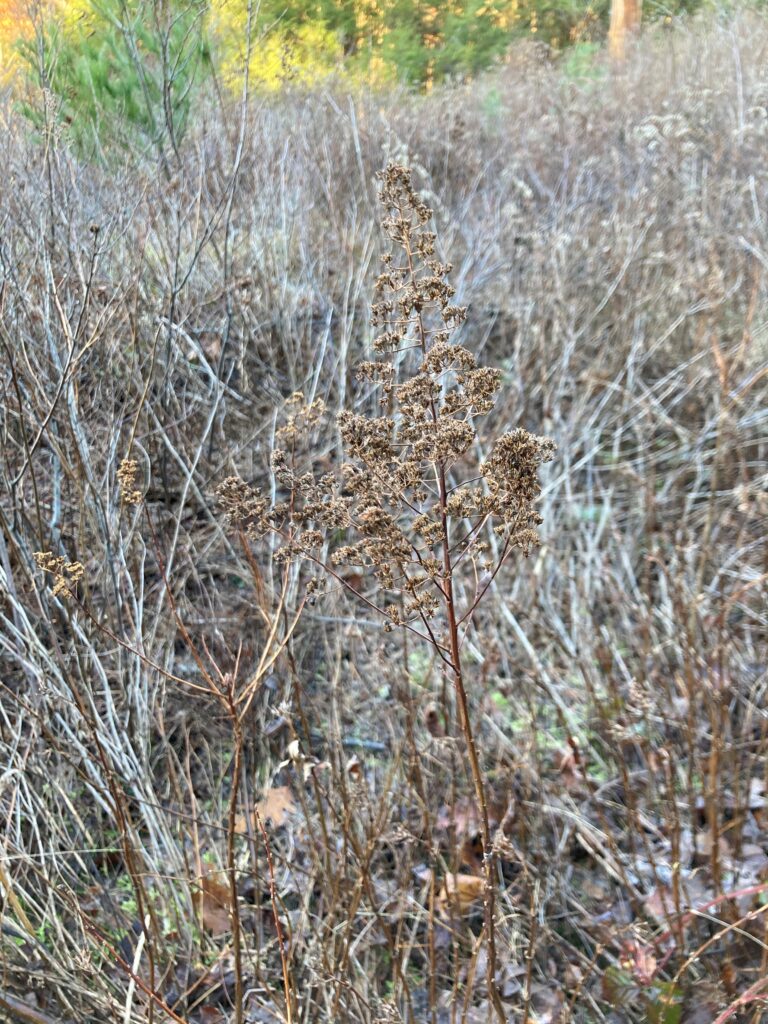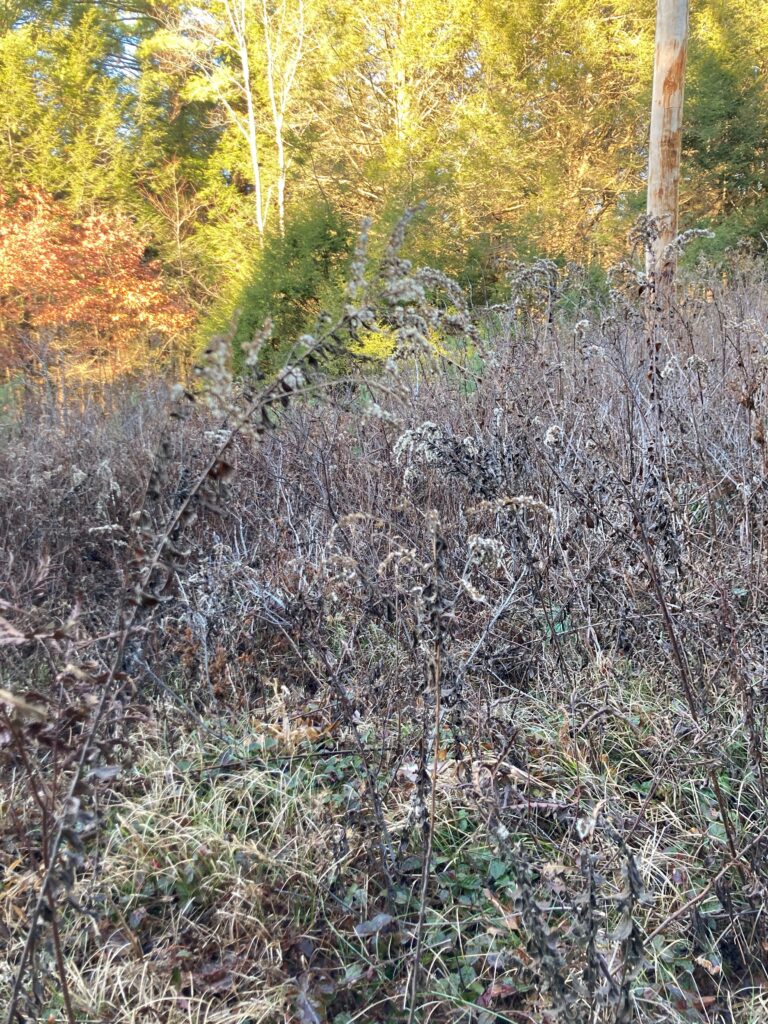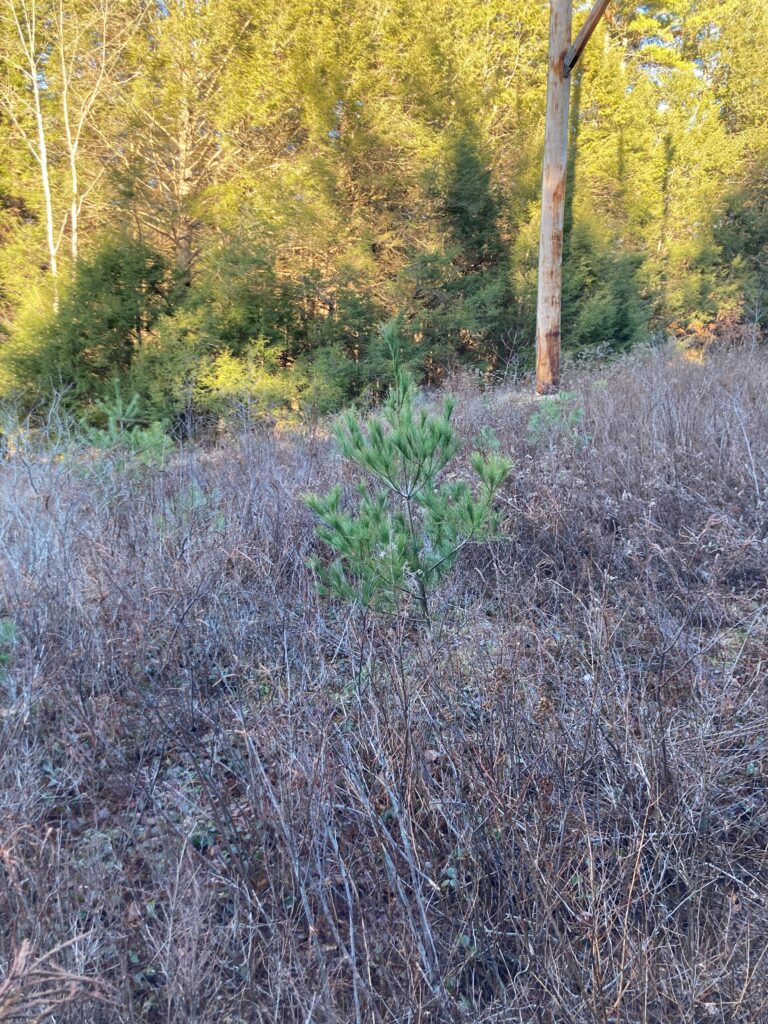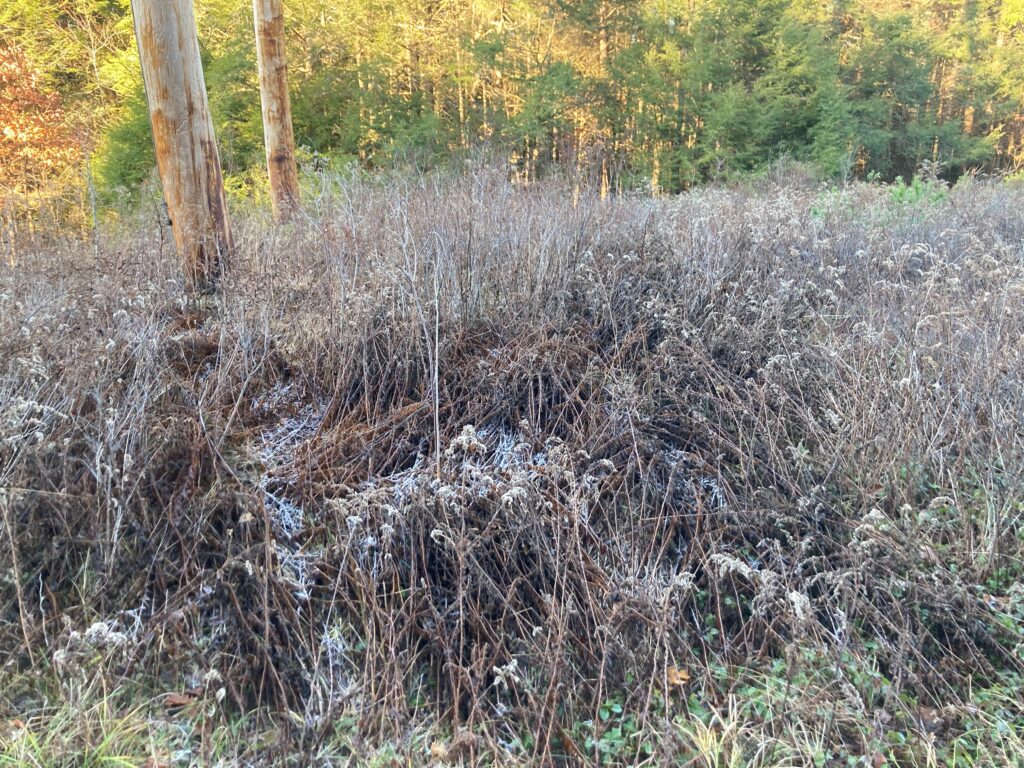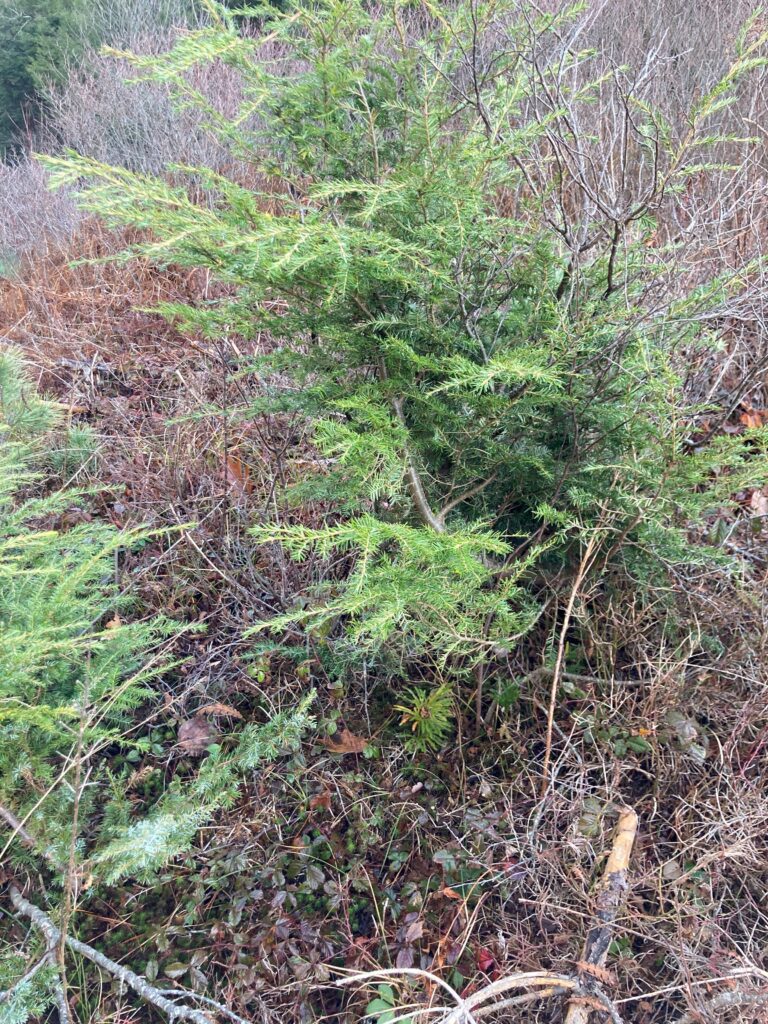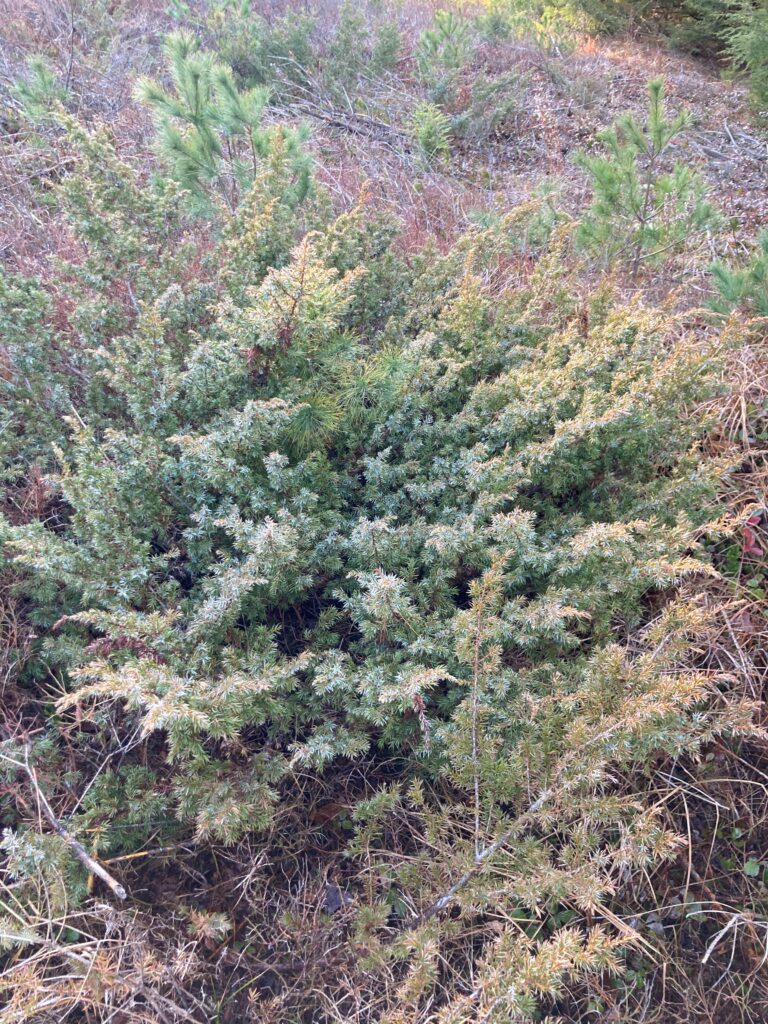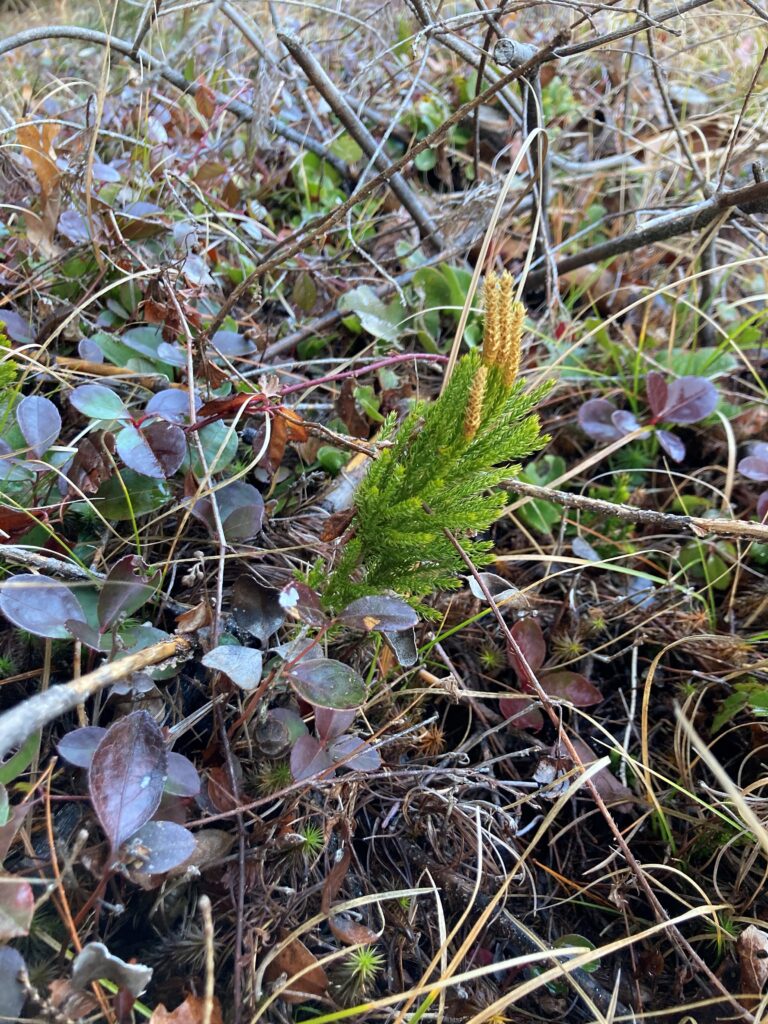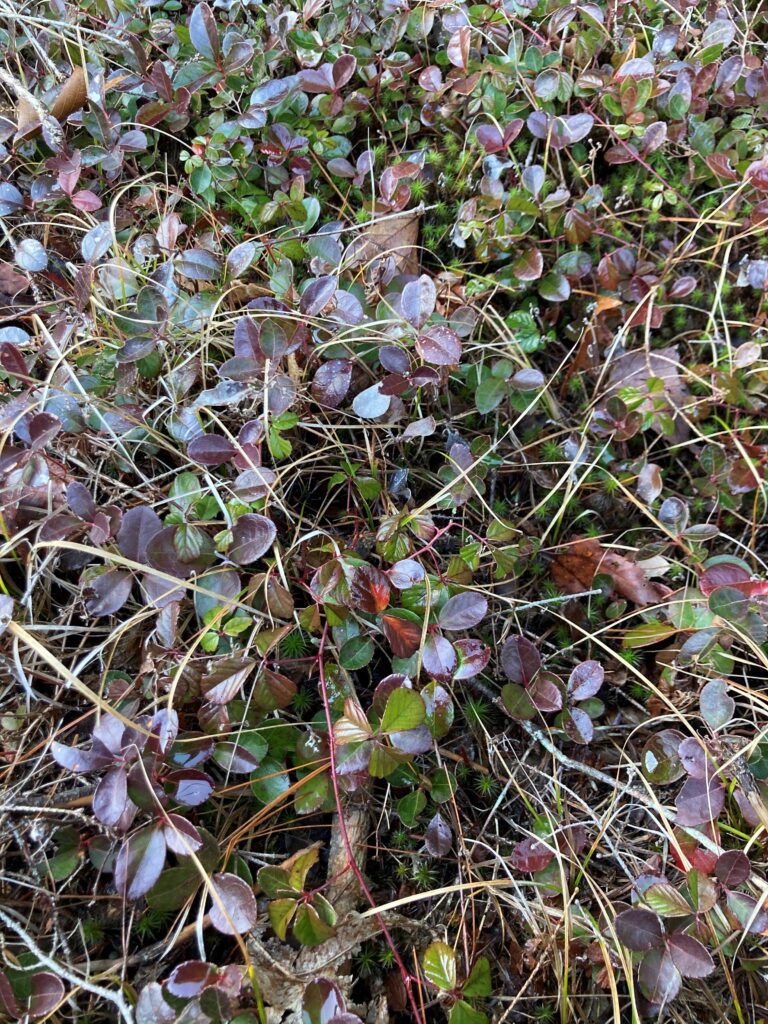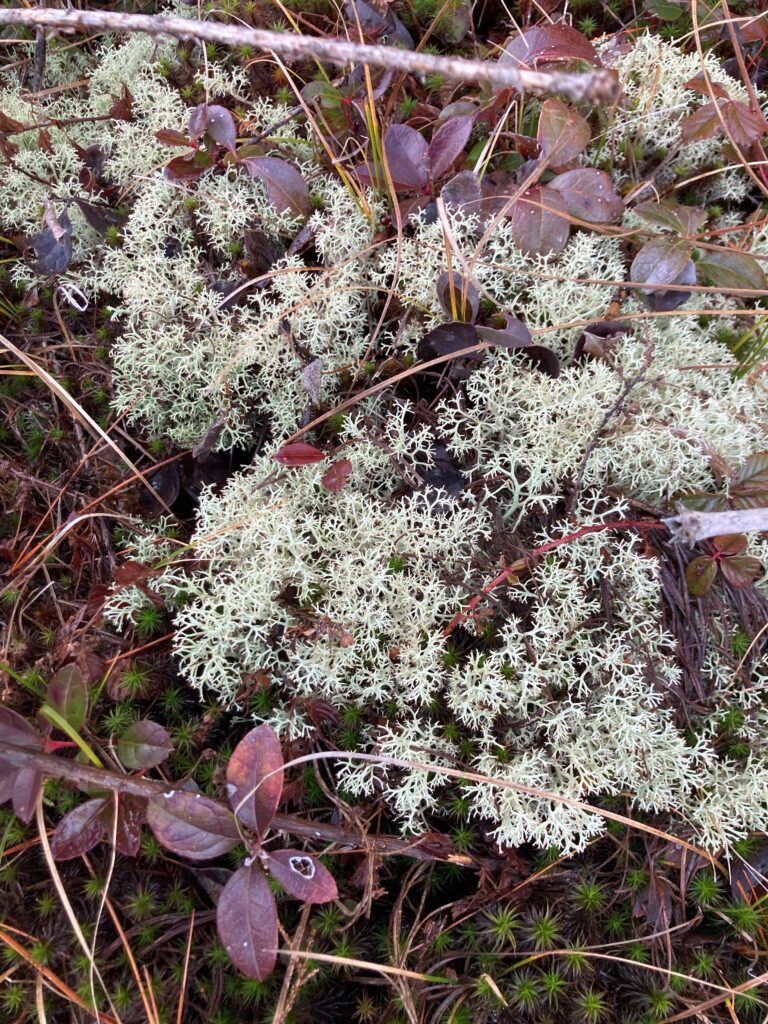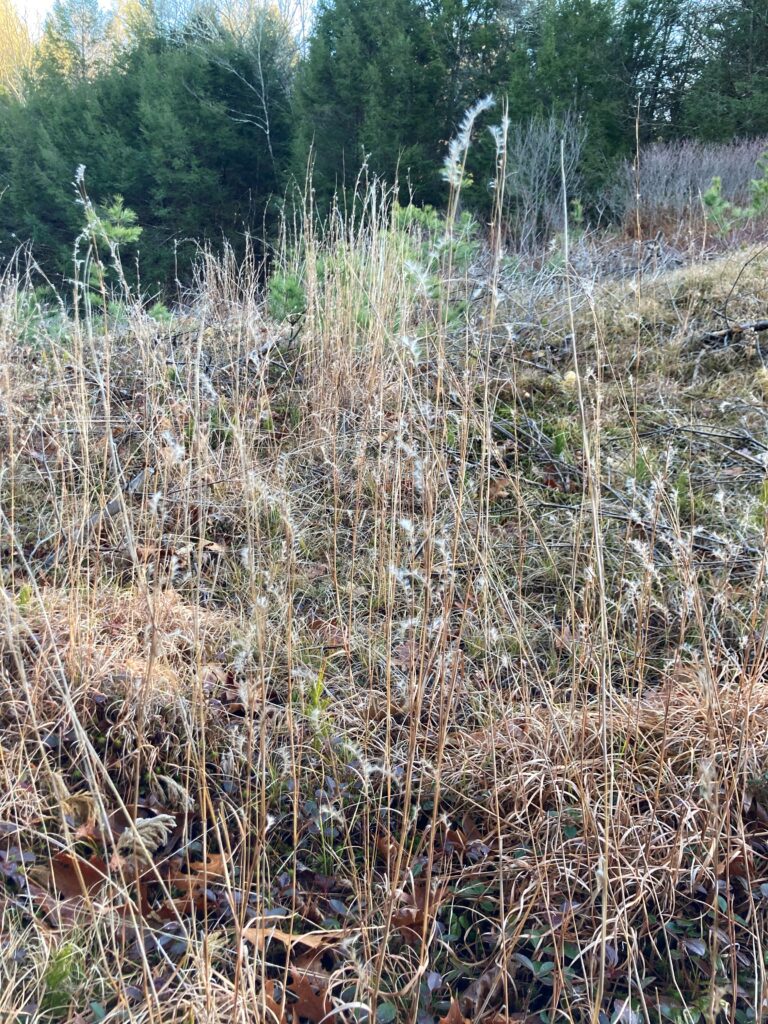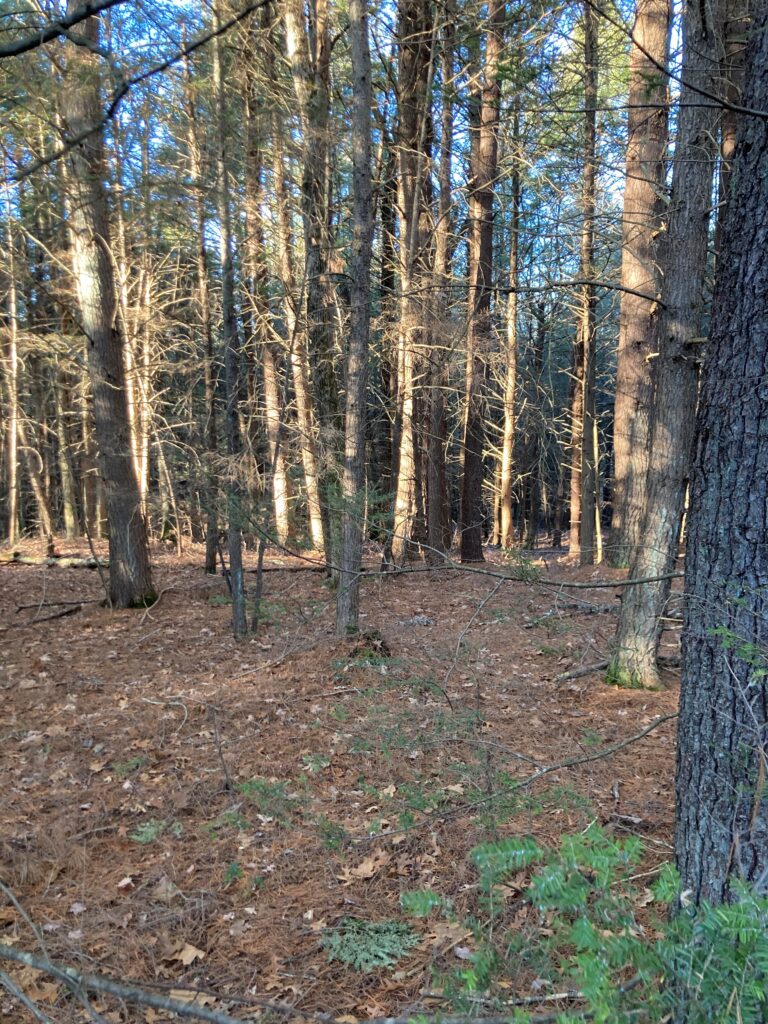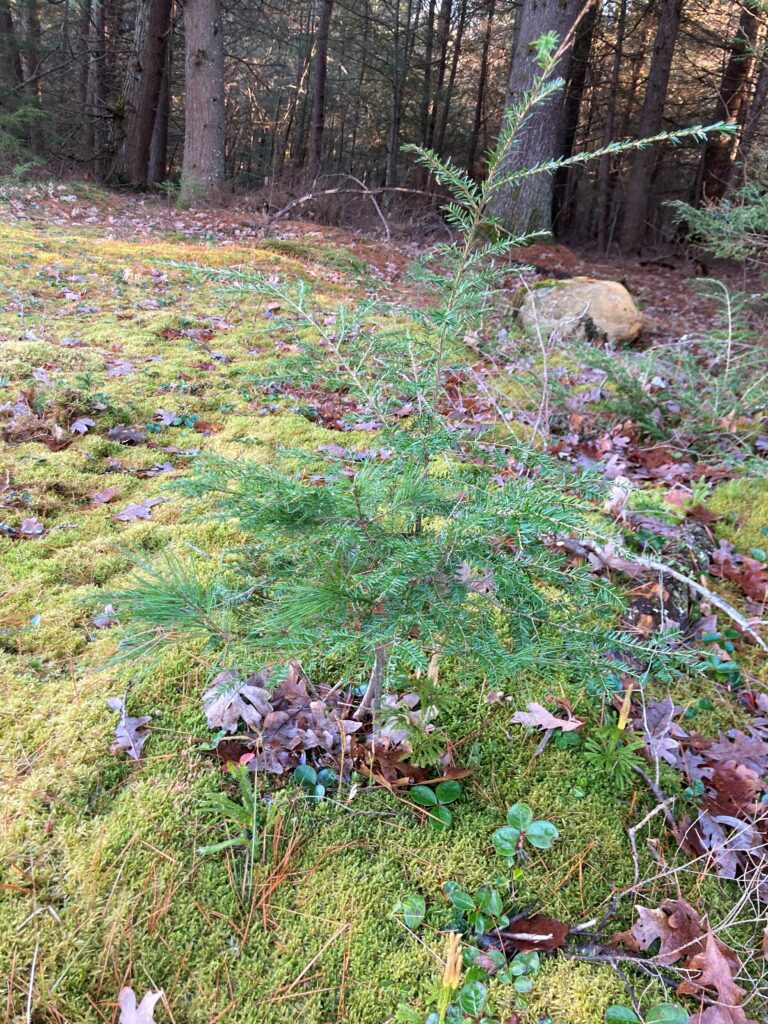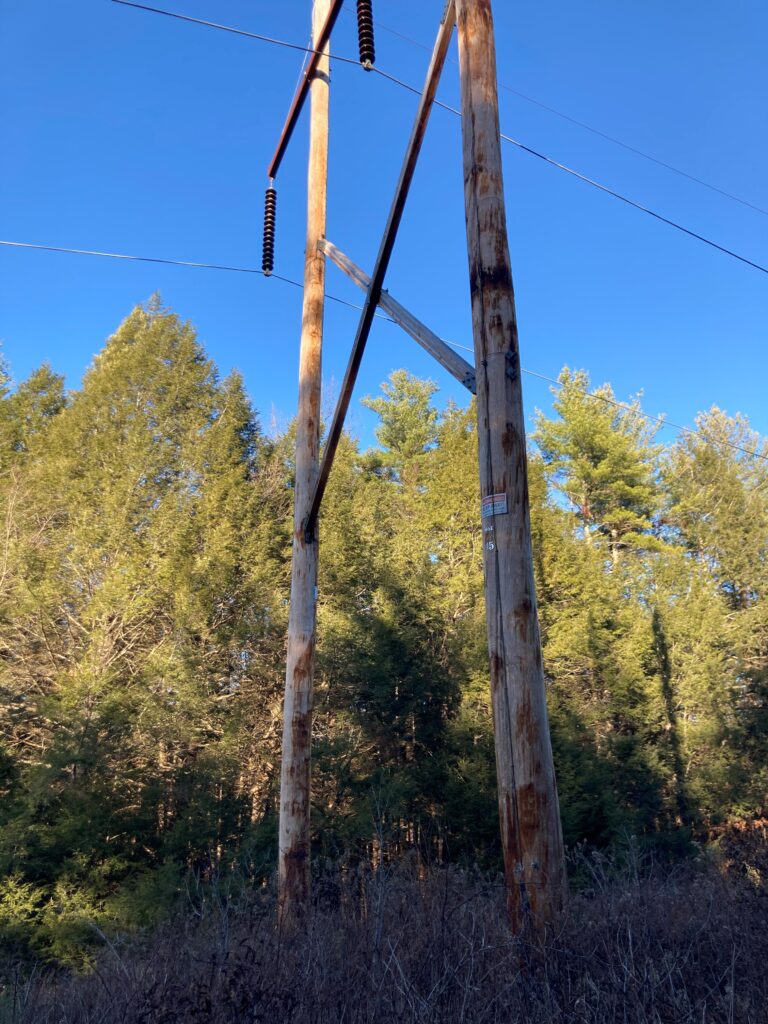After a week in quarantine, delayed test results (they were negative though), and a 3.5 hour drive I’m home in Massachusetts. I decided to write about a spot on a power line a few miles from my house for my final blog post, hoping to draw comparisons between this disturbed area and the quarry. I picked a spot on top of a rise along a seldom-used access road, on a balmy late November day. The sky was a grey-ish blue but the sun was already low at 2:00, a reminder that winter is coming. Here’s a link to the spot on Google Maps.
I neglected to take a picture of the entirety of my spot, but this is a similar spot a few hundred feet down the power lines.
The northwestern edge of the power line corridor is dominated by hemlocks, which retain their vibrant green needles, but behind them the hemlocks are all bare and a few red oaks are mixed in. This is somewhat surprising – I would have thought a fast-growing pioneer tree would dominate the edge of the forest and hemlocks would mostly be deeper in where their shade tolerance gives them an advantage. The ground on the edge of the forest features at least three distinct kinds of moss, but further in the ground is bare save for a few needles and oak leaves.
Hemlock on the edge of the forest Moss
Two more types of moss
The grass on the access road is matted down in the tire ruts, and much of it has dried out. Off the track beneath the towers there are a variety of low shrubs (pictured below). I was only able to identify the goldenrod. One spot is matted down; I suspect this is the result of maintenance on the lines. A couple white pine saplings are scattered among the otherwise grey vegetation.
Unidentified shrub Unidentified shrub with small red buds
An unidentified shrub; the stem I’m holding on the right has stalks like the picture on the left growing off it
Goldenrod White pine sapling
Matted down area
Near the southeast edge of the corridor there are a handful of small junipers, as well as some ground-level plants with green and red leaves, a type of moss I hadn’t seen beforesome lichen (which I’ve never seen growing in dirt), and some grass-like stalks with fluff (seeds?) on the ends. The edge of the forest here is predominantly hemlock, with a couple small red oaks still holding on to their dead leaves. Higher leaves on white oaks tend to have deeper lobes, so the shallow lobes of these red oak leaves are likely a sign that the trees don’t receive mush sunlight and need more leaf area to compensate. The interior of the forest contains more hemlocks and a white pine overstory, and the ground is covered in pine needles and the occasional oak leaf.
Two types of junipers
A variety of moss I didn’t see on the other side Plants with red and green leaves – very festive
Lichen Grass-like plant with tufts of fuzz
Shallow-lobed red oak leaves The interior of the forest
Overall, I observed surprisingly little commonality between the species here and at Redstone Quarry. Both sites have juniper and oak, but beyond that they diverge sharply. Reasons for this could include the more recent time of disturbance here, different bedrock compositions, and differing climates.
A small hemlock; I wonder how old it is I’m not sure what kind of tree this is
All images: Walsh, E. J. (2020). Barre 122 Power Lines [Digital photograph].
